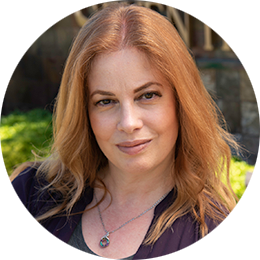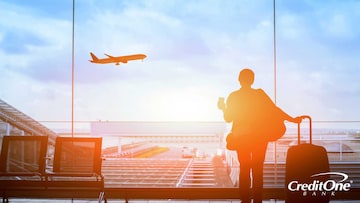October 05, 2022
Topics:
TravelSan Francisco is famous for its culture, iconic landmarks, and being one of the hilliest cities in the world. So how do you make sure you experience the best it has to offer when you visit? Here’s our rundown of the Top 10 must-see places in the City by the Bay.

San Francisco is one of the most interesting and colorful cities in the world—and one of the hilliest. It’s like the Northern California counterpart to Los Angeles, with both logging in amongst the biggest cities in the country and most famous cities in the world. But NorCal has a completely different vibe, and different weather, than SoCal.
Southern California is about year-round sunshine and hanging on the beach. Northern California is generally cooler and rockier. SoCal is the home of the movie-focused Hollywood while NorCal is home to tech-heavy Silicon Valley. LA is about spread-out neighborhoods and busy freeways, while SF is about steep, narrow hills and cable cars. Both are great cities, and both deserve a trip to see the local attractions.
But if you can only experience a few things in San Francisco, which ones do you choose? We did the research for you, and these are undeniably the Top 10 attractions you must check out when visiting the City by the Bay.
1. Golden Gate Bridge

The Golden Gate Bridge is one of the most recognizable landmarks on the planet, and the ultimate iconic identifier of San Francisco. So if you were only to see one thing in the City by the Bay, it absolutely should be the bridge across that bay.
When the Golden Gate Bridge opened in 1937, it was the world’s longest bridge. It’s 1.7 miles long, or almost 9,000 feet, and the main span between the two towers is 4,200 feet—more than 2 ½ times the length of the Brooklyn Bridge—and it kept the world record for nearly 45 years. The first public crossing saw 200,000 people walk, run and roller skate across. It spans the Golden Gate, a narrow strait that connects San Francisco to Marin County.
Its trademark color is called “international orange,” which is very similar to the hues used in engineering and aerospace, designed to be visible to planes and ships. But at the time it was a pretty radical choice. The reddish-orange shade was initially planned as just the primer before a standard grey or black topcoat, like nearly every other bridge in existence. Well, the consulting architect pushed to keep the bright color, in contrast to the bay’s natural blues and greens, and the rest is history.
2. Golden Gate Park
Not far from the bridge you’ll find the 1,000-acre Golden Gate Park, the second most visited city park in the United States next to New York’s Central Park. Golden Gate Park offers a ton of attractions including museums, artwork, gardens, trees, lakes, and wildlife, including plenty of birds. You can also strike up a game in nearly any sport, from tennis to disc golf. Or just relax in one of the many playgrounds and picnic areas.
Some of the more popular attractions you can visit inside the park include the unexpected Bison Paddock, the 55-acre San Francisco Botanical Garden, the peaceful Japanese Tea House and Garden, the colorful Garden of Shakespeare’s Flowers, the historic Conservatory of Flowers, the celebrated de Young Museum, and the fascinating California Academy of Sciences.
Inside the California Academy of Sciences museum, you can visit the Steinhart Aquarium, home to nearly 40,000 live animals from more than 900 species, making it one of the most biologically diverse and interactive aquariums in the world. You can also check out the Morrison Planetarium and the lush four-story Osher Rainforest, with over 1,600 plants, animals, birds and butterflies living under a 90-foot-diameter glass dome.
3. Presidio of San Francisco

Golden Gate Park is near the Golden Gate Bridge, but not right beside it … that honor goes to the Presidio of San Francisco. It’s one of the country’s most popular national parks and features scenic overlooks, hiking and biking trails, picnic sites, beaches, a golf course, and more. Originally home to native peoples for thousands of years, it became a US Army post in 1846. Almost 150 years later, in 1994, it was turned into a national park.
The Fort Point National Historic Site sits on the tip of the peninsula, at the base of the Golden Gate Bridge. This is where the military defended San Francisco Bay, from Gold Rush times through to World War II. You can wander through the artillery casemates, take a guided tour, and see Civil War reenactment groups conduct living history demonstrations here.
The Presidio Tunnel Tops, which opened in 2022, is the newest attraction within the park site. This 14-acre national park space was built by the community, for the community, to be an inclusive space with special events and artwork on display. Why the name? It’s literally built on top of the Presidio Parkway tunnels, where the main freeway connecting the Golden Gate Bridge to the City of San Francisco goes underground.
One eye-catching feature is the series of organic-looking cypress wood benches, which look like waves, sand dunes, or giant chunks of driftwood. They were actually made from reclaimed Presidio cypress trees that had been cut down when the site was an Army base. And they make a perfect vantage point for views of the Bay or city.
4. Palace of Fine Arts
Just outside the Presidio, between the Parkway and the Bay, is the historic Palace of Fine Arts. It was originally built for the 1915 Panama-Pacific Exhibition, the first great world’s fair of the 20th century. San Francisco worked hard to beat out all competitors vying to host the exhibition, because they were determined to show the world that they had survived the devasting earthquake and fire of 1906.
The Palace was considered the exhibition’s most beautiful structure, with its Greco-Roman architecture, spacious interiors, meticulous landscaping, and a lagoon. And it’s still gorgeous today. You can stroll through the grounds, although there’s not much to see inside unless there’s a special event going on, since the venue doesn’t have a permanent exhibit. It’s now mainly used for corporate events, trade shows, galas, weddings and parties.
5. Alcatraz

It’s not just the former site of one of the most famous prisons in the world—Alcatraz Island, home to The Rock, is now a national park.
It was a military fortress first, protecting the Bay along with Fort Point. Then from 1850 until 1933, the US Army used it as a military prison. After that, the Department of Justice took over and it became the maximum-security prison most of us know it as. The timing of this handoff wasn’t a coincidence; crime was rampant in the 1920s and ‘30s, and the government wanted to make it abundantly clear that they were serious about stopping it. Tons of movies have been set at this prison, including Alcatraz, Escape from Alcatraz, Birdman of Alcatraz, The Rock, and more.
After nearly 30 years, the Alcatraz prison closed in 1963. Because of its isolated location, the prison cost three times as much to operate as any other Federal prison. In 1969, Native American activists called the Indians of All Tribes took control of the island for 19 months in the name of freedom but were ultimately evicted.
In 1972, Alcatraz Island was included as part of the new Golden Gate National Recreation Area. And yes, you can visit the site, as well as take a guided or self-guided tour. If you go in the evening, the ferry circles the island with a live narration on its history.
6. Fisherman’s Wharf
If you don’t like seafood, or you hate watching sea lions, this might not be your jam. But otherwise, you can’t go to San Francisco without checking out Fisherman’s Wharf, the area along the northeast tip of the San Francisco Peninsula. This is where boats dock, fishermen fish, and you can experience the authentic seaside lifestyle.
Fisherman’s Wharf is the most family-friendly area in the city and includes museums, cruises, whale tours, bike rentals, and of course, some highly rated seafood restaurants (and you can probably find a decent steak or pizza, but it’s really about the seafood). They even have outdoor stands serving up steaming hot fresh Dungeness crab, like a maritime version of a New York hot dog cart.
Here are a few attractions to check out while you’re there.
PIER 39
It’s not the only pier at Fisherman’s Wharf, but it’s definitely the most fun. PIER 39 is home to the Aquarium of the Bay, where three main exhibit areas showcase over 24,000 local sea creatures, from otters and turtles to sharks, eels, jellyfish, sea stars, bat rays, and of course, fish. There’s also a Giant Pacific Octopus, which is apparently one of the smartest creatures in the ocean, despite its mushy donut-shaped brain. Er, brains … because it actually has nine of them. Yes, nine—one in the head, and one in each arm.
Outside, the most amazing sight (and sound) is the raft of sea lions making PIER 39 their home. Yes, “raft” is the proper way to describe a group of sea lions, just like “pride” is the proper way to describe a pack of actual lions—but also, these sea lions literally hang out all day on rafts. They started camping out here in 1990, shortly after the destructive Loma Prieta earthquake in 1989, and within a few months there were over 300 of them. Each winter, you can see up to 900 sea lions here, most of them 800-pound males. It’s kind of crazy, but so remarkably cool!
Ferry Building
The Ferry Building is a famous landmark at the foot of Market Street. First opened in 1898, it was a transportation hub through to the 1930s, until the bridges were built. Now it’s restored as the Ferry Building Marketplace, a world-class public food market complete with restaurants, craft stands, boutiques, and The Ferry Plaza Farmers Market.
Ghirardelli Square
After seafood dinner, why not enjoy some delicious, sweet dessert? The Historic Ghirardelli Square is the first successful reuse project in the US, adapting one location into a different purpose. Now it’s a mix of retail shops, but it was originally a chocolate factory, from the 1850s to the 1960s. You can still tour through old-fashioned chocolate-making equipment on display, and sample some chocolate onsite, snack on a signature sundae, or purchase some confections to take with you.
7. Coit Tower

Like a beacon overlooking the Bay, Coit Tower is a lookout on top of Telegraph Hill, and a memorial to Lillie Hitchcock Coit, the wealthy resident who left a sizable endowment to the city for the purpose of adding beauty to it. Coit was a huge fan and volunteer of the Fire Department, so to honor her memory, the city built both the 180-foot Coit Tower and a sculpture of firefighters in Washington Square.
The tower was completed in 1933, and immediately became a symbol of the city. Its observation deck provides 360-degree views of the city and the adjacent San Francisco Bay. There are fresco murals inside, and a cast concrete phoenix above the entrance. Some think it looks like a firehose nozzle to reflect Coit’s love of firefighters, but that wasn’t the intention—it was just meant to be simple and classic.
As you may or may not know, another Hitchcock—filmmaker Alfred Hitchcock—lived in San Francisco, and shot several movies there. He wasn’t related to Lillie Hitchcock Coit, but Hitchcock the director was obsessed with the Coit Tower, which appears in the movie Vertigo. No, it’s not the tower where James Stewart tackles his fear of heights, but Hitchcock insisted the Coit Tower be seen in the background of establishing shots.
8. Union Square
Union Square is a public plaza covering over 2 ½ acres in the cultural district of downtown San Francisco. It was built in 1850 and named for being a Union Army rally spot in the Civil War, but now it’s home to upscale department stores, designer boutiques, gift shops and art galleries—and in the wintertime, a skating rink.
In the center of the square stands the 85-foot-tall Dewey Monument, erected in 1903 to commemorate Admiral George Dewey’s victory in the Spanish–American War’s Battle of Manila Bay. On top is a bronze figure of the winged Nike, Greek Goddess of Victory, holding a trident and a laurel wreath, which are both symbols of—you guessed it—victory.
Hitchcock fans will recognize this location as well, since it was featured at the beginning of the movie The Birds. Tippi Hedren crosses the street, looks back and gets the first glimpse of hundreds of seagulls swarming menacingly around the Dewey Monument tower.
Just a few blocks away is Yerba Buena Gardens, featuring a series of public gardens reflecting diverse San Francisco cultures. That includes the 5-acre Esplanade, serene Butterfly Garden, rooftop Children’s Garden, and the Sister City Gardens, featuring plants and flowers native to San Francisco’s 18 Sister Cities around the world. This area also has plenty of green space, galleries, museums, theaters, public art, memorials, and award-winning architecture.
9. Twin Peaks

The Twin Peaks Natural Area is a 64-acre park made up of two hills, and they offer amazing views due to being the second-highest elevation in the area at 922 feet (Mt. Davidson beats them by a whopping six feet at 928 feet high). So if you ask almost anybody where to go for the best views of San Francisco, Twin Peaks is likely at the top of the list.
Twin Peaks gives us a glimpse into the past, with its original grasslands and coastal scrub that used to populate the entire area. Hiking the trails gives you 360-degree views of the whole city, or you can go to the north peak parking lot for a sweeping vantage point of the Bay (except when there’s fog).
The northern hill is officially called Eureka Peak and includes the popular Christmas Tree Point overlook. Why “Christmas Tree”? Because the San Francisco Examiner and other local organizations put a giant decorated Christmas tree up there every year from 1927 through 1930, until activists protested killing trees for the holidays. Now the live Monterey cypress in front of McLaren Lodge in Golden Gate Park is the city’s official Christmas tree, but the name of the overlook remains.
The southern hill is named Noe Peak and overlooks Noe Valley. Since you can’t see the Bay or the Golden Gate Bridge very well from this hill, it’s not as popular for sightseers, but still makes for a peaceful hike through a natural conservation area.
The Mission blue butterfly, an endangered species since 1976, has a limited habitat range. Twin Peaks is one of the few areas left of its native home, so the Golden Gate National Parks Conservancy has made a concerted effort to help them breed and thrive there. As a result, chances are you’ll see some of these electric blue butterflies while visiting the park.
10. Cable Cars
OK, so it’s not a landmark … or even an attraction, really. But it’s something that’s decidedly synonymous with San Francisco—cable cars.
San Francisco also has streetcars, which are often called trolley cars or trams. But it’s the cable cars that are most iconic and unique to this hilly city (yes, there’s a difference).
Cable Cars
Cable cars are designated a National Historic Landmark, and have been climbing city slopes since 1873. They connect to an underground cable that runs constantly, like an escalator, and simply pulls the car up the hill as it turns. The car runs on tracks with a slot in the middle, and latches onto the sunken cable through the opening. There are open sections at each end with running boards where you can jump on and ride while hanging off the outside (which looks dangerous, but they only go at a constant 9 mph).
Streetcars (Trolleys)
While cable cars can’t run without the moving underground cable, streetcars have an electric motor and a rooftop trolley pole that draws power through an overhead wire. They go at various speeds, moving with the traffic. San Francisco has an eclectic collection of streetcars, many of them historic models from around the world that have been restored and put back into service, and some are well over 100 years old.
In this city, the cable cars are tourist attractions that primarily go up and down hills, while the streetcars are part of the public transit system used by locals to get around from place to place, whether on hills or not.
If you travel to San Francisco, don’t forget to take along a credit card that earns you points on travel. For example, Credit One Bank’s new Wander® Card offers 10X rewards points on eligible hotels and car rentals booked using their travel partner, 5X rewards points on other eligible travel, dining, and gas buys, and 1X rewards points on all other purchases.



